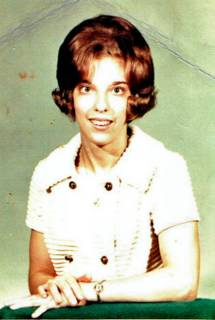Blogging Central 101, Part 1 Everything You Always Wanted to Know (But Didn’t Know Where to Ask)
Preface: THe inspiration for this tutorial came to me last week in the form of an Instant Message from an online friend, who left it at 2:30 AM. My friend said he has decided he wants a blog, and he "needs blogging 101." I found the message later that morning, and this is my response. I have decided to include it as part of my blog in case others need it also.
If you’ve been out and about on the Internet at all, you have likely seen references to “blogs”, “blogging” and “bloggers”. You may even have read a blog or two, (if you are reading this, it may even be a blog entry!) and now you’ve decided you want a blog (or several) of your own. Welcome to an exciting and dynamic part of the world of online writing and publishing; come on in! This tutorial will help you get started by providing some basic blogging information plus somewhat more advanced information and resources. I know I am presenting a lot of information here; this is a collection of resources and information I’ve gathered in a little more than a year of blogging. To make it easier for you to use and refer to, I’ve created sections. Take what you need, use it, and then come back for more when you are ready. No rush, no pressure; you can proceed at any pace comfortable for you.
What is a blog? Defining a few terms:
Let’s begin with a few definitions. A “blog” is short for “weblog”, which is simply an online journal or diary to which one or more people post entries on a regular basis. A blog can be used for a business, to share news and information about a product, service or company, or it can also be personal, to document events in day-to-day life. A blog can also be useful for instruction via posted tutorials. For some people including myself, a blog may be their first foray into the world of online publishing, and can be a way to gain certain skills, such as writing or editing hypertext markup language (HTML) or cascading style sheets (CSS) code, via editing a blog’s template. I will provide more information about templates and editing shortly, so keep reading . . .
“Blogging” is the process of creating and maintaining a blog. A blog is maintained via postings, or entries made on a regular basis. A “blogger” is a blog’s writer or contributor.. Note: I draw a distinction between “blogger” and “Blogger”. For the purposes of this tutorial, Blogger refers to a specific blog platform, which is owned and operated by Google. (There are many other choices of blogging platforms available; you can search them out on the Internet. Some of these are free; others require a fee. Also, some, such as Blogger, are hosted; others require you to have a web server to upload them onto. Blogger is hosted on Blogspot. This discussion focuses on Blogger, since that is the one I am currently using and therefore the one with which I am most familiar.)
Blogger is a good choice of blogging platform for beginning bloggers, because it offers useful features that are fairly easy to use (such as editable templates) and it is free. New features are planned for Blogger, and several have been added to make it easier and more productive for new users. One such feature is Blogger for Word. This is a downloadable plug-in for Microsoft Word that makes it possible to write, edit and post a blog entry from inside Word. This tutorial is being composed in a Word document. It is also possible to include photographs in a blog entry, using Blogger. Formerly, a user had to do this via two external programs. Currently, all it takes is a few mouse clicks in Blogger. You can also host photos and other types of small files such as icons on an external site such as ImageShack.


0 comments: to “ Blogging Central 101, Part 1 Everything You Always Wanted to Know (But Didn’t Know Where to Ask) ”
Post a Comment